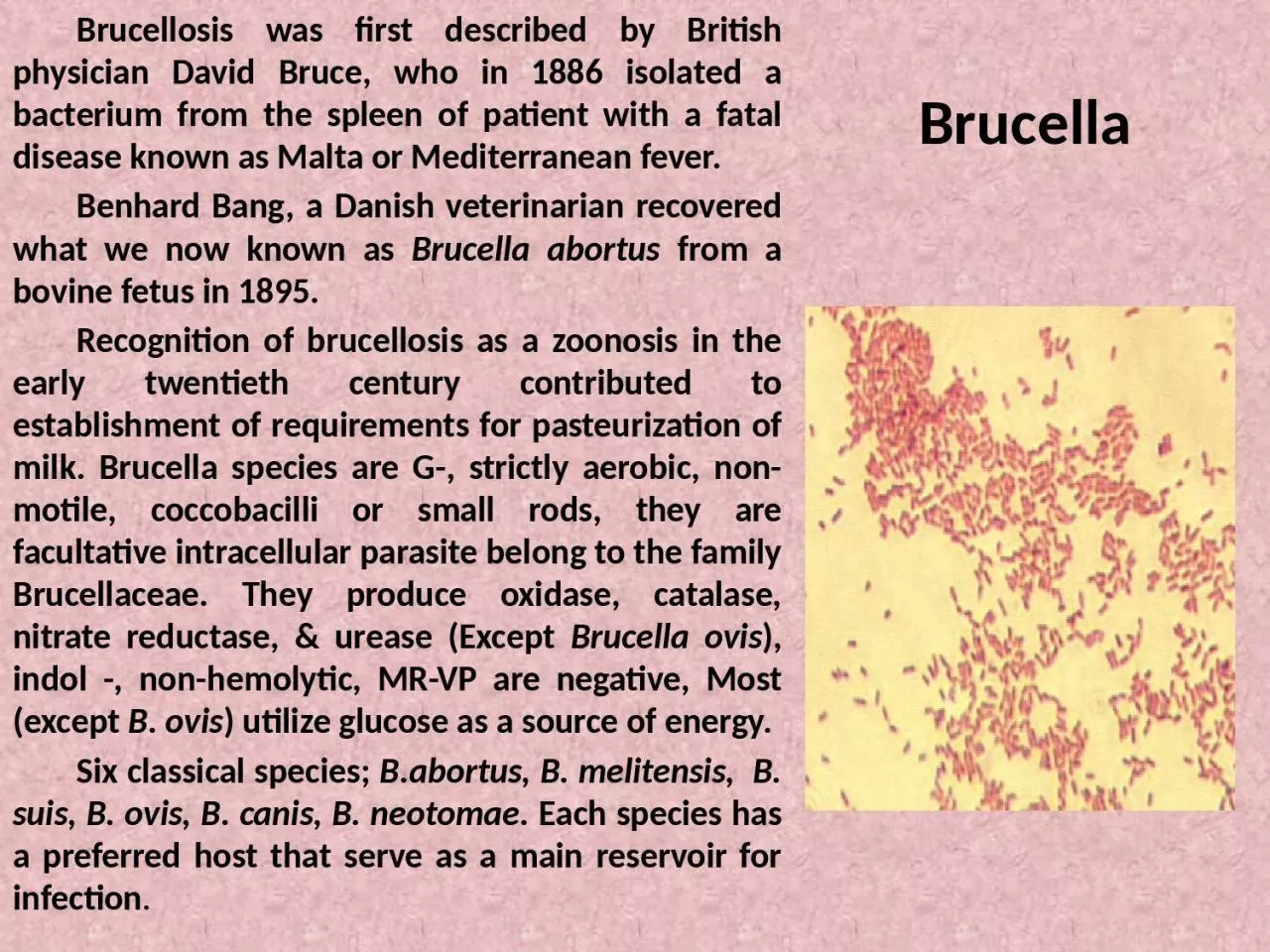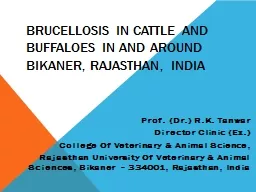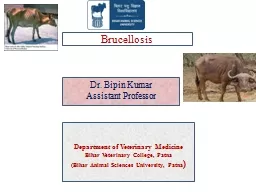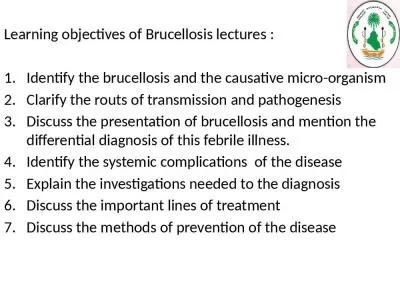PPT-Brucella Brucellosis was first described by British physician David Bruce, who in 1886
Author : Ruggedman | Published Date : 2022-08-02
Benhard Bang a Danish veterinarian recovered what we now known as Brucella abortus from a bovine fetus in 1895 Recognition of brucellosis as a zoonosis in the
Presentation Embed Code
Download Presentation
Download Presentation The PPT/PDF document "Brucella Brucellosis was first describe..." is the property of its rightful owner. Permission is granted to download and print the materials on this website for personal, non-commercial use only, and to display it on your personal computer provided you do not modify the materials and that you retain all copyright notices contained in the materials. By downloading content from our website, you accept the terms of this agreement.
Brucella Brucellosis was first described by British physician David Bruce, who in 1886: Transcript
Download Rules Of Document
"Brucella Brucellosis was first described by British physician David Bruce, who in 1886"The content belongs to its owner. You may download and print it for personal use, without modification, and keep all copyright notices. By downloading, you agree to these terms.
Related Documents














